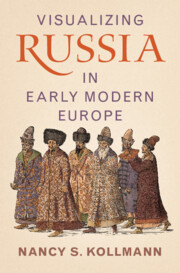Book contents
- Visualizing Russia in Early Modern Europe
- Visualizing Russia in Early Modern Europe
- Copyright page
- Dedication
- Contents
- List of Figures
- Preface
- Introduction
- Part I Encountering Russia Visually
- 1 Imagery in an Ocularcentric Century
- 2 Humanism Encounters Russia
- Part II Sigismund von Herberstein
- Part III The Muscovy Company Maps Eurasia
- Part IV Visuality Explodes
- Part V Adam Olearius
- Conclusion
- Bibliography
- Index
2 - Humanism Encounters Russia
from Part I - Encountering Russia Visually
Published online by Cambridge University Press: 31 August 2024
- Visualizing Russia in Early Modern Europe
- Visualizing Russia in Early Modern Europe
- Copyright page
- Dedication
- Contents
- List of Figures
- Preface
- Introduction
- Part I Encountering Russia Visually
- 1 Imagery in an Ocularcentric Century
- 2 Humanism Encounters Russia
- Part II Sigismund von Herberstein
- Part III The Muscovy Company Maps Eurasia
- Part IV Visuality Explodes
- Part V Adam Olearius
- Conclusion
- Bibliography
- Index
Summary
Chapter 2 explores Europeans’ first exposures to Muscovy from the late fifteenth century, focusing initially on the Italian humanist Paolo Giovio. His 1525 account of Muscovy was based on interviewing Russian diplomats; Giovio also commissioned a portrait of Grand Prince Vasilii III which became a template for such works thereafter. The chapter proceeds to Maciej Miechowita’s influential account of the Rus’ lands, Muscovy and forest and steppe frontiers; Miechowita established stereotypes of Russia (as familiar if less civilized than contemporary Europe) and the forest and steppe as exotic and barbaric. It concludes with analysis of the earliest maps of Muscovy, by Martin Waldseemüller, Olaus Magnus and Anton Wied.
- Type
- Chapter
- Information
- Visualizing Russia in Early Modern Europe , pp. 39 - 66Publisher: Cambridge University PressPrint publication year: 2024

